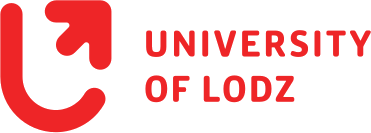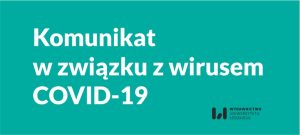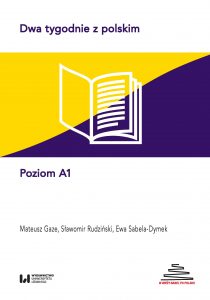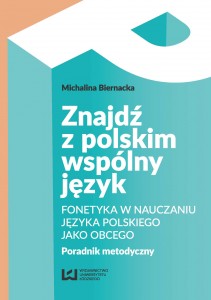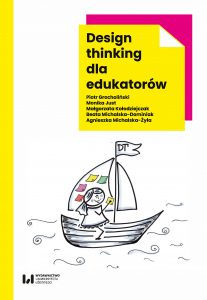Wskaźniki bibliometryczne 2023 / CiteScore 2023
Opublikowano: 18 June 2024
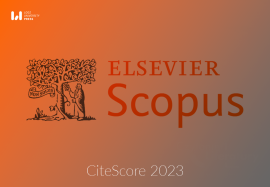
Elesevier opublikował wskaźniki CiteScore i wartości centylowe czasopism indeksowanych w bazie Scopus za 2023 rok.
Siedem czasopism afiliowanych przy Uniwersytecie Łódzkim uzyskało wyższe lub równe wskaźniki cytowania niż przynajmniej 40% czasopism, z którymi konkurują w rankingach dyscyplin.
| Profil czasopisma w Scopusie | Dyscyplina | Percentyl 2023 | CiteScore 2023 |
| Bulletin of the Section of Logic | Arts and Humanities_Philosophy | 72 | 0,9 |
| Text Matters | Arts and Humanities_Literature and Literary Theory | 83 | 0,6 |
| Research in Language | Arts and Humanities_Language and Linguistics | 40 | 0,4 |
| European Spatial Research and Policy | Social Sciences_Geography, Planning and Development | 71 | 3,9 |
| Anthropological Review | Social Sciences_Anthropology | 52 | 0,9 |
| Comparative Economic Research | Economics, Econometrics and Finance_General Economics, Econometrics and Finance | 47 | 1,3 |
| Multicultural Shakespeare | Arts and Humanities_Literature and Literary Theory | 62 | 0,3 |
| Text Matters | Social Sciences_Cultural Studies | 56 | 0,6 |
| Multicultural Shakespeare | Arts and Humanities_Visual Arts and Performing Arts | 52 | 0,3 |
Ponadto dziewięć czasopism w uzyskało wyższy wskaźnik CiteScore niż w 2022 roku.
| Profil czasopisma w Scopusie | CiteScore 2022 | CiteScore 2023 |
| European Spatial Research and Policy | 2,6 | 3,9 |
| Tourism | 0,6 | 0,8 |
| Qualitative Sociology Review | 0,6 | 0,8 |
| Text Matters | 0,3 | 0,6 |
| Przegląd Socjologii Jakościowej | 0,2 | 0,4 |
| Multicultural Shakespeare | 0,2 | 0,3 |
| Przegląd Nauk Historycznych | 0,1 | 0,2 |
| Convivium | 0 | 0,1 |
| Zeszyty Wiejskie | 0 | 0,1 |
Do bazy Scopus w ostatnich miesiącach dołączyły trzy kolejne czasopisma: Acta Universitatis Lodziensis. Folia Litteraria Polonica, e-Scripta Romanica oraz Logopaedica Lodziensia. Analizy porównawcze będzie można dla nich przeprowadzić w następnym roku.
Wskaźnik CiteScore to wskaźnik cytowalności. Oblicza się go dzieląc liczbę cytowań wybranego czasopisma z ostatnich czterech lat (w tym z roku dla którego wskaźnik jest wyliczany) przez liczbę artykułów wybranego czasopisma zdeponowanych w bazie w ciągu tego samego czteroletniego okresu.
Wyniki CiteScore z 2023 roku dotyczą cytowań i dokumentów z lat 2020-2023.
CiteScore 2023 czasopisma „Bulletin of the Section of Logic”.
Źródło: Scopus.
CiteScore jest wskaźnikiem nieznormalizowanym, co oznacza, że nie uwzględnia różnic pomiędzy dyscyplinami. Nie powinno się wykorzystywać go do porównywania czasopism z różnych grup tematycznych. W celu ustalenia wpływu czasopisma w danej dyscyplinie należy uwzględnić percentyle/centyle CiteScore.
Wartość centylowa wskazuje względną pozycję czasopisma w wybranym obszarze tematycznym na podstawie wskaźnika CiteScore. Jedno czasopismo może znajdować się w kilku rankingach.
Jeśli wartość centylowa danego tytułu wyniosła 70, oznacza to, że 70% czasopism w wybranym obszarze tematycznym ma taki sam lub niższy CiteScore.
Elsevier has recently published CiteScore and CiteScore Percentiles for the year 2023.
Seven journals affiliated with the University of Łódź received higher or equal citation metrics than at least 40% of the competing journals in the discipline ranking:
| Journal Scopus profile
|
Subject area
|
Percentile 2023 | CiteScore 2023 |
| Bulletin of the Section of Logic | Arts and Humanities_Philosophy | 72 | 0,9 |
| Text Matters | Arts and Humanities_Literature and Literary Theory | 83 | 0,6 |
| Research in Language | Arts and Humanities_Language and Linguistics | 40 | 0,4 |
| European Spatial Research and Policy | Social Sciences_Geography, Planning and Development | 71 | 3,9 |
| Anthropological Review | Social Sciences_Anthropology | 52 | 0,9 |
| Comparative Economic Research | Economics, Econometrics and Finance_General Economics, Econometrics and Finance | 47 | 1,3 |
| Multicultural Shakespeare | Arts and Humanities_Literature and Literary Theory | 62 | 0,3 |
| Text Matters | Social Sciences_Cultural Studies | 56 | 0,6 |
| Multicultural Shakespeare | Arts and Humanities_Visual Arts and Performing Arts | 52 | 0,3 |
Nine journals improved their CiteScore metrics in comparison to last year’s results:
| Journal Scopus profile | CiteScore 2022 | CiteScore 2023 |
| European Spatial Research and and Policy | 2,6 | 3,9 |
| Tourism | 0,6 | 0,8 |
| Qualitative Sociology Review | 0,6 | 0,8 |
| Text Matters | 0,3 | 0,6 |
| Przegląd Socjologii Jakościowej | 0,2 | 0,4 |
| Multicultural Shakespeare | 0,2 | 0,3 |
| Przegląd Nauk Historycznych | 0,1 | 0,2 |
| Convivium | 0 | 0,1 |
| Zeszyty Wiejskie | 0 | 0,1 |
Three more journals have joined the Scopus database in recent months: Acta Universitatis Lodziensis. Folia Litteraria Polonica, e-Scripta Romanica and Logopaedica Lodziensia. Comparative analyzes will be possible for them next year.
CiteScore is a citation index. The journal’s yearly CiteScore is calculated by dividing the number of citations received in the last four years (including the evaluated year) by the total number of papers from that journal published in Scocups during the same four-year period.
CiteScore results from 2023 include citations and documents from 2020–2023.
CiteScore 2023 for „Bulletin of the Section of Logic”.
Source: Scopus.
CiteScore is a non-standardized indicator that does not account for differences between the disciplines. It should not be used to compare journals assigned to different subject areas.
The relative standing of the journal in its specific subject field is indicated by percentiles calculated from the journal’s CiteScores. A journal can be evaluated in more than one discipline.
For example, if the percentile value of a given title is 70 – 70% of journals in the selected subject area have the same or lower CiteScore.
Komentarze
Ten post dostępny jest także w języku: Polish

